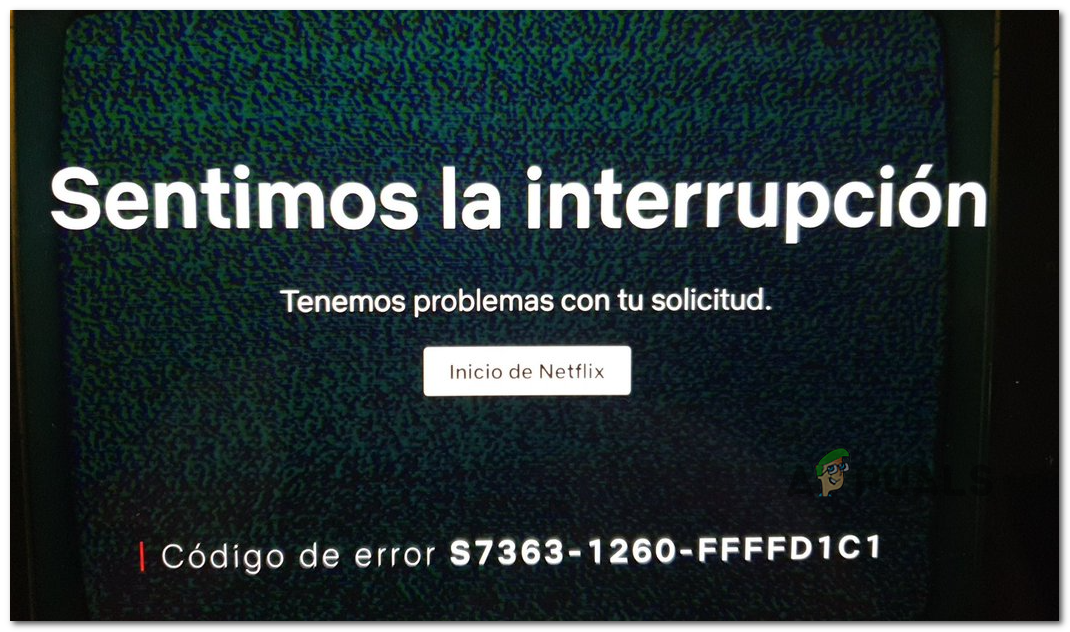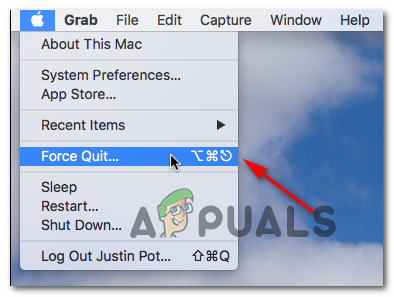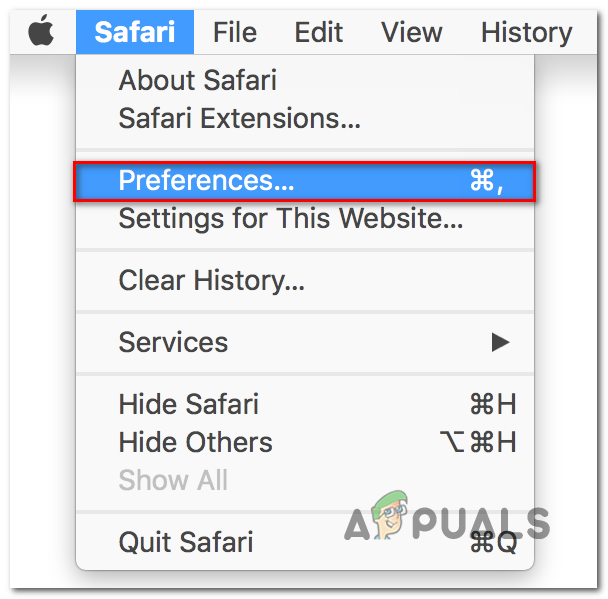How to Fix Netflix Error S7363-1260-FFFFD1C1
Some macOS users are experiencing the Error S7363-1260-FFFFD1C1 error code when attempting to stream content from their default browser. In the vast majority of cases, this problem is reported to occur on Safari.

As it turns out, there are several different causes that might contribute to the apparition of the S7363-1260-FFFFD1C1 error code. Here’s a shortlist of potential culprits:
- Bady cached data – According to several affected users, this error code can simply be the result of badly cached data. If this scenario is applicable, you should be able to fix this problem by rebooting your MacOS computer and attempt to stream again after the next startup is complete.
- Conflicting Media Players – This Netflix error code can appear in instances where a different media player (app-based or browser-based) is conflicting with the Netflix instance. In this case, you should be able to eliminate the interference by force-closing any other active media players on your macOS.
- Corrupted Netflix website data – Partially corrupted or glitched Netflix data can also contribute to the apparition of this issue. If this scenario is applicable, you should be able to fix this problem by accessing Safari’s Preferences and removing any Netflix-related website data.
- The issue is rooted in PRAM or NVRAM – If you’re encountering this problem with other similar video players like iTunes, Hulu, and HBO, chances are you are actually dealing with a PRAM or NVRAM issue. In this case, you should be able to fix the problem by booting into recovery mode and resetting both components.
- Safari glitch – If you’ve burned through every available fix and you’re still seeing this error in your Safari browser, chances are you’re dealing with an underlying browser glitch. If you’re not willing to reinitiate it, the only viable alternative is to use a 3rd party browser.
Method 1: Reboot your macOS
If you haven’t tried this yet, you should start out by doing a simple computer restart. If the issue is being caused by badly cached data that the streaming attempt is attempting to leverage, a system reboot should take care of the issue automatically.
To reboot your macOS, click on the Apple logo (top-left corner of the screen), then click on Restart from the newly appeared context menu.

Next, confirm the operation and wait for your macOS computer to restart before seeing if the error code is resolved on Netflix.
If you end up seeing the same S7363-1260-FFFFD1C1 streaming error with Netflix, move down to the next potential fix below.
Method 2: Close all Media Players
As it turns out, this problem can also occur due to a conflict with a different media player that is currently active on your macOS system. A conflict of this kind is known to occur between Netflix and standalone players like YouTube, iTunes, and Quicktime.
Fortunately, if this scenario is applicable, you can fix this problem by force quitting the active video players that you don’t need at this moment. This operation was confirmed to be effective by a lot of affected users.
If you don’t know how to do it yourself, follow the instructions below:
- Click on the Apple icon (top-left corner) to bring up the context menu, then click on Force Quit.

Accessing the Force Quit menu - Once you’re inside the Force Quit menu, go ahead and select any media players that are still actively running. Common culprits are QuickTime, iTunes, or the app version of YouTube / Vimeo and click Force Quit.
- After every potential conflicting video player is closed, restart Safari and repeat the action that was previously causing the S7363-1260-FFFFD1C1 error.
If the same problem is still occurring, move down to the next potential fix below.
Method 3: Remove Netflix website Data from Safari
As it turns out, this particular issue can also occur due to partially corrupted or glitched Netflix data that is somehow interfering with the steaming attempt.
Some users that were facing the same problem have managed to fix the problem by removing any leftover Netflix data that might cause this issue.
If you haven’t tried this yet, you should proceed by accessing the Safari Preferences menu and clear any cookies and website data related to Netflix before restarting the browser.
Here’s a quick step-by-step guide on how to do this:
- Open your Safari browser and click on the Safari menu from the horizontal ribbon menu at the top.
- Then from the newly appeared context menu, click on Preferences.

Accessing the Preferences menu - Once you’re inside the Preferences menu of Safari, go ahead and click on the Privacy tab.

Accessing the Privacy tab - Next, go under Cookies and website data and select Details (Manage Website Data).
- Once you’re inside the correct menu, use the search function to find every bit of data related to Netflix, then use the Remove button to get rid of every instance.
Note: When asked whether you want to confirm your choice, click on Remove now and wait for the operation to complete. - After every relevant cookie and website data is removed, attempt to stream content from Netflix again and see if the problem is now fixed.
If the same problem is still occurring, move down to the next potential fix below.
Method 4: Resetting PRAM and NVRAM
As it turns out, this problem can also be rooted in an issue with NVRAM (Non-Volatile Random-Access Memory) or PRAM (Parameter RAM).
This scenario is even more likely to be applicable if you’re also encountering issues with iTunes, Hulu, and other similar services.
Every Mac computer uses NVRAM to store certain settings and then provide quick access to them. PRAM, on the other hand, is primarily used to store Kernel information.
Under certain circumstances, both NVRAM and PRAM are prone to store information that might cause streaming issues on your computer.
If you think this scenario might be applicable, follow the instructions below to reset both PRAM and NVRAM and then deploy a command that resolves the majority of HDCP-related issues:
- First things first, start by shutting down your MAC completely. It’s important to shut it down regularly and not put it in hibernation mode (sleep mode).
- Turn your MacOS on again and immediately after you do so, press and hold on the following keys:
Option + Command + P + R
- Keep all four keys pressed for about 20 seconds or until your Mac shows signs that is attempting to restart itself – Keep the keys pressed until you hear the startup sound (when this happens, you can finally release the keys).

Forcing an NVRAM and PRAM reset - Once the next startup is complete, open the Terminal app by using the search function in the top-right corner of the screen.

Opening the Terminal application on OsX - Inside the Terminal app, type the command below and press Return to reset the HDCP component:
nvram 8be4df61-93ca-11d2-aa0d-00e098032b8c:epid_provisioned=%01%00%00%00
- After this command is processed completely, close the Terminal app, and initiate another streaming attempt with Netflix.
If the problem is still not resolved, move down to the next potential fix below.
Method 5: Using a Different Browser
If none of the workarounds have allowed you to get around the S7363-1260-FFFFD1C1 error, you should consider a 3rd party alternative.
As far as we’be been able to tell, this problem is exclusive to Safari, so a lot of affected users have managed to fix this problem by migrating to a different 3rd party browser that’s available on macOS.
To make things easier for you, we’ve made a list of 3rd party browsers that you can use to avoid the error code in Safari:





